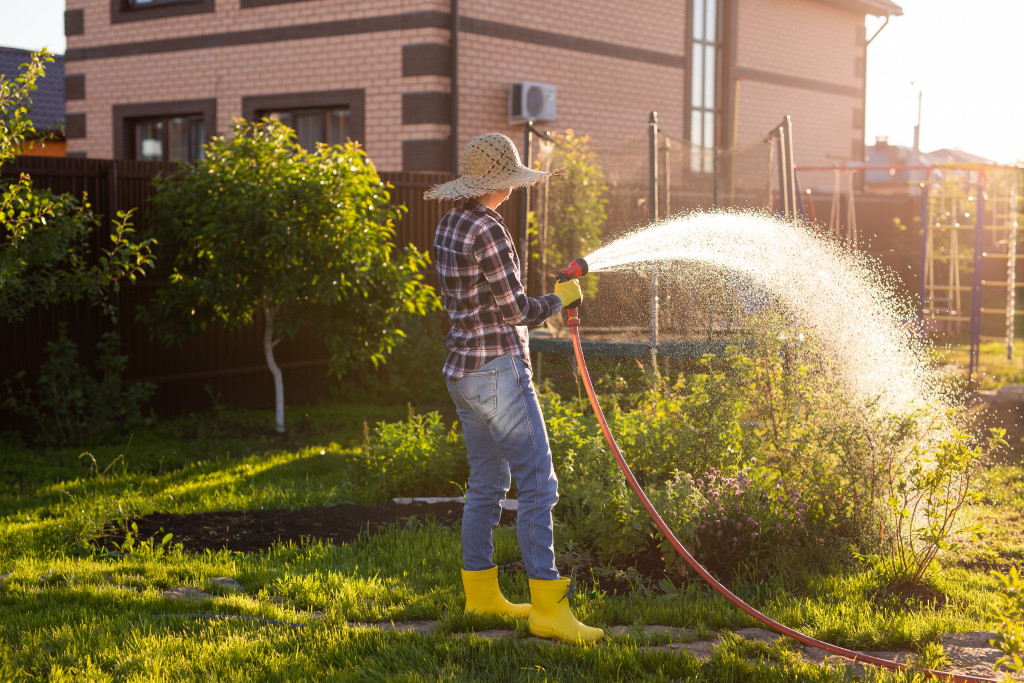Organizing your garden doesn’t have to be a daunting task. With a bit of planning and some basic knowledge, you can easily get your garden in shape for the growing season. This guide will cover everything you need to know about organizing your garden, from designating space for different types of plants to creating a watering schedule. By the time you’re finished reading, you’ll be ready to tackle your garden confidently.
Designating Space for Different Types of Plants
One of the first steps in organizing your garden is designating space for different types of plants. If you’re growing a mix of crops and flowers, you’ll want to create separate areas for each. This will help ensure that your plants have the appropriate amount of space to grow and prevent them from competing for resources like light and water.
You can designate space by marking off areas with string or stakes or by creating raised beds. Not only will this make your garden more organized, but it will also help improve the overall appearance. If you’re growing a large number of different plants, consider labeling each bed with the name of the crop or type of plant it contains.
Creating a Watering Schedule
Another important step in organizing your garden is creating a watering schedule. Water is essential for plant growth, so it’s important to ensure that your plants get enough without overwatering them.
To create a watering schedule, start by determining how much water your plants need each week. Then, divide that number by the number of days you plan to water them. For example, if your plants need 1 inch of water per week and you plan to water them three times per week, you would give them 1/3 inch of water each time.
Staying on Top of Weeding
Weeding is an ongoing task in any garden, but it’s especially important in the early stages of plant growth when weeds can compete with newly planted seeds for resources like light and water. To stay on top of the weeding, set aside some time each week to pull up any new weeds that have sprouted.
You can also use a mulch to smother weeds and prevent them from germinating in the first place. Also, make sure to regularly clear away any dead leaves or debris that could harbor weed seeds. This will keep them from taking root in your garden.

Create a Storage for Your Equipment
One of the most frustrating things about gardening is trying to find your tools when needed. To avoid this, create a designated place for all of your equipment. This could be a shed, a garage, or even just a corner of your backyard. You can get clear corrugated roofing sheets to create a makeshift shed if you don’t have one already.
In this space, store all of your gardening tools, including shovels, rakes, hoes, and watering cans. You can also keep any fertilizers or pesticides you use here. This will help you stay organized and make it easy to find everything you need when it’s time to work in the garden.
Ensuring Your Garden is Pest-Free
Pests can wreak havoc on a garden, so it’s important to take steps to prevent them from taking up residence. Start by keeping your garden free of debris and weeds, which can provide shelter for pests. You can also use traps or barriers to keep pests out.
If you find pests in your garden, take action immediately to eliminate them. This could involve using a pesticide or manually removing them from the plants. Be sure to follow the instructions on the pesticide label carefully to avoid harming your plants.
Organizing Your Garden Seeds
No garden is complete without seeds. But if you’re not careful, seeds can quickly become a jumbled mess. To organize your seeds, invest in a seed storage system. This could be a simple cardboard box with dividers or a more elaborate system with drawers and labels.
Use this system to store all of your seeds, including those you’ve collected from previous seasons. This will help you keep track of what you have and make it easy to find the seeds you need when it’s time to plant them.
Following these simple tips, you can easily organize your garden and prepare for the growing season. Don’t be afraid to experiment and find what works best for you — after all, part of gardening fun is figuring out what works best in your own space. With a bit of planning and some basic knowledge, you can easily create a thriving garden that brings you joy all season long.



